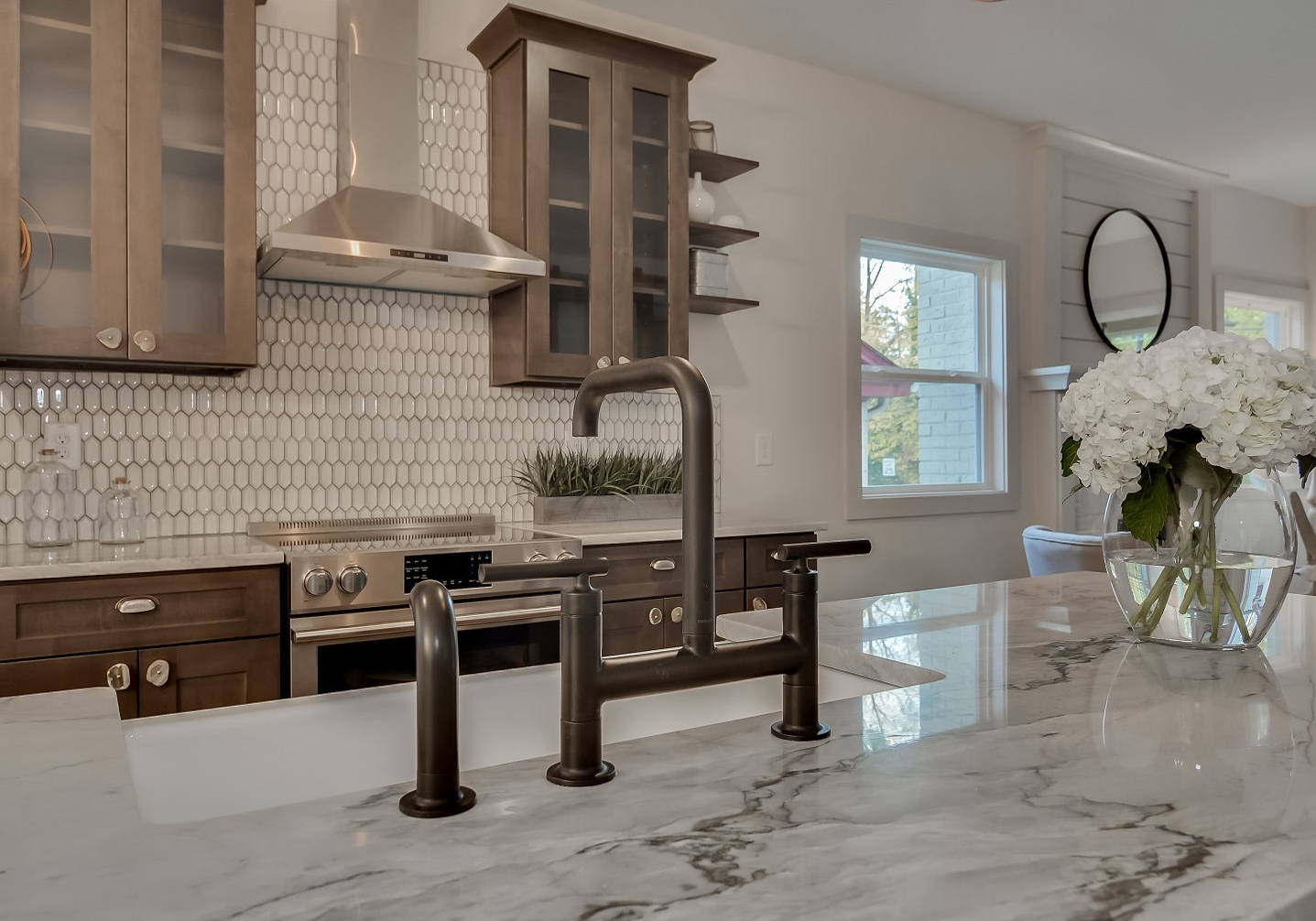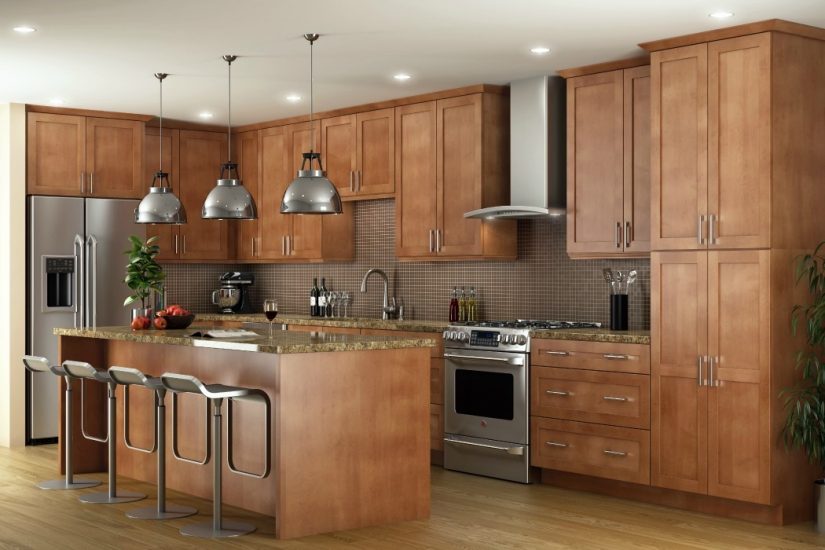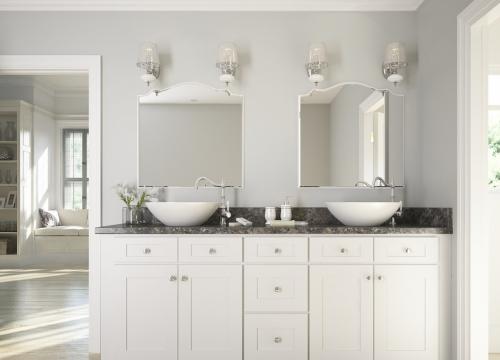Installing a kitchen backsplash is an easy DIY project, which is why many homeowners decide to tackle this part of a kitchen remodel on their own. You only need a handful of materials: backsplash tile, mortar, grout, sealer, tile adhesive, and cheesecloth. Each of these is essential when installing kitchen backsplashes, but today, we’re going to focus on just one key material — grout! Read on for tips on how to choose the right product for your DIY project.
Cement Based or Epoxy Grout: Which Is Best For Kitchen Backsplashes?

When shopping for grout for your kitchen remodel, you will encounter cement based and epoxy grout. Each of these two varieties also comes in sanded or unsanded. Let’s look at the differences and explain which is best for kitchen backsplashes.
Unsanded cement grout is simply cement, powder pigments, and water. Sanded cement grout is the same mixture, but with the addition of sand. Sand is added to grout to give it a thicker density and prevent shrinking in the joints.
When deciding between sanded and unsanded, the main factor is the joint (a.k.a. the space between the tiles). The rule of thumb is that you should use unsanded grout with joints smaller than an eighth of an inch. Wider joints (those more than an eighth of an inch) benefit from sanded grout, because, as we mentioned, the sand stops the grout from shrinking and provides some additional strength.
In most cases, homeowners opt for cement-based grout, because it is less expensive and easier to apply. But when tiling a high-traffic area or a space that is exposed to grease, acids, or other damaging substances, epoxy can be the better option.
Epoxy is made up of resin and hardener, so it is resistant to most substances and does not easily stain. Because it is the more durable option, it is often recommended for use in kitchen backsplashes, tile countertops and floors. Like we just discussed, whether to use sanded or unsanded epoxy grout depends on the width of your tile joints.
Which Color Grout Is Best For Backsplashes?

When deciding on a grout color, you can go a few different ways. Complement, contrast, or conceal. Complementing grout plays off the colors in your backsplash tile. That could mean blue tile and blue grout, for example. Contrasting grout creates a distinct difference between the tile and grout. This could be black tile and white grout, for example. When concealing grout, you want it to stand out as little as possible. This is usually done by choosing a neutral shade, such as white or grey.
With a kitchen remodel, homeowners sometimes feel pressure to make a big change. This can lead to bright tile or contrasting grout, even if that is not really their style. When deciding which color grout to choose, it is better to be cautious than too creative. You might like the look of colored grout in the moment, but will you still feel the same way in a few years? Unless you are 100% sold on a specific color choice, conceal with a neutral shade.
At The RTA Store we help make your dream home a reality with RTA (Ready To Assemble) and Pre-Assembled cabinets and accessories. Whether it’s your kitchen bathroom, laundry room, home office, bar room or TV room, we offer the same (if not better) quality you would find at any retail store, but for a fraction of the price. Stop by our website or give us a call and let us make your dreams come true with the help of our free room design tool!



